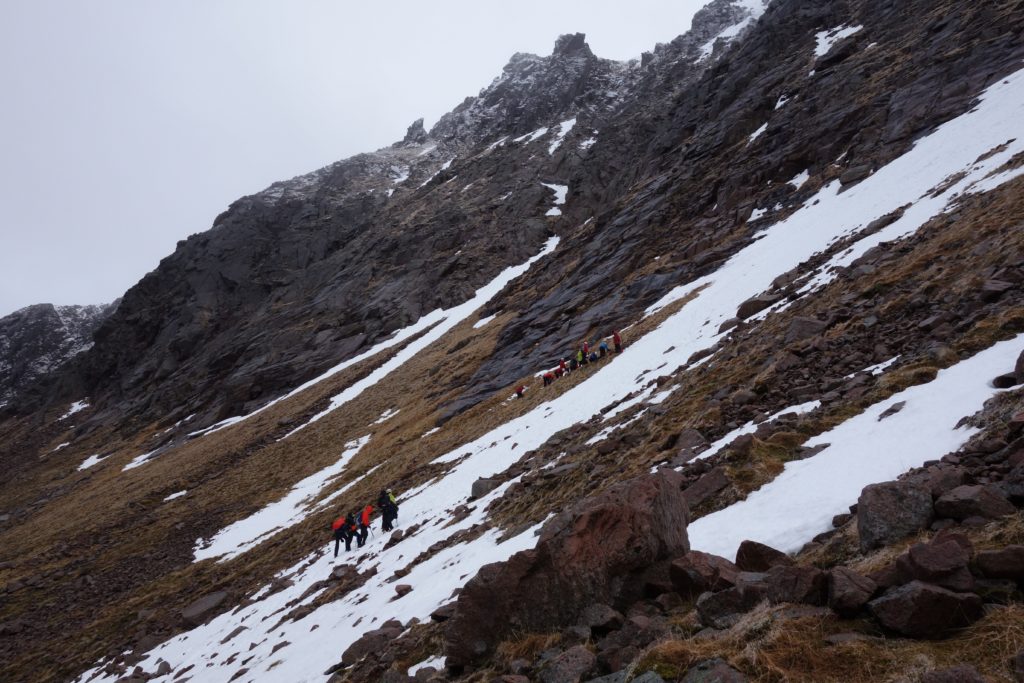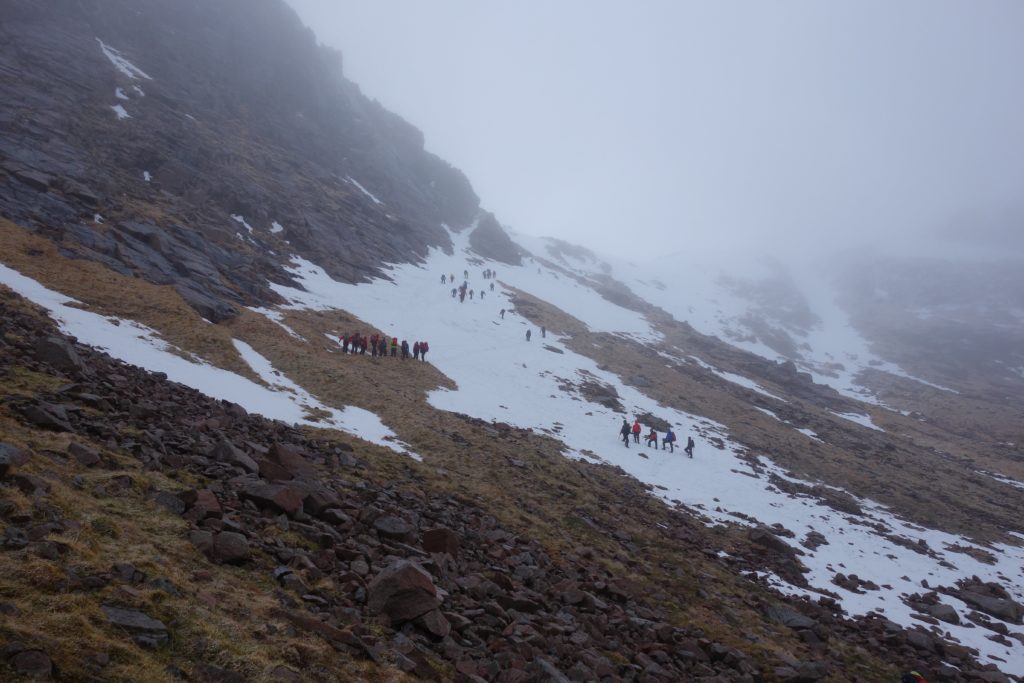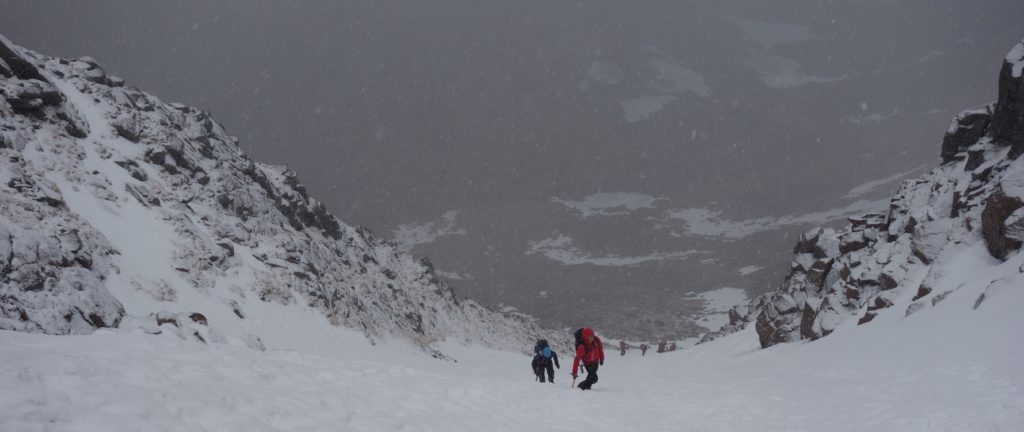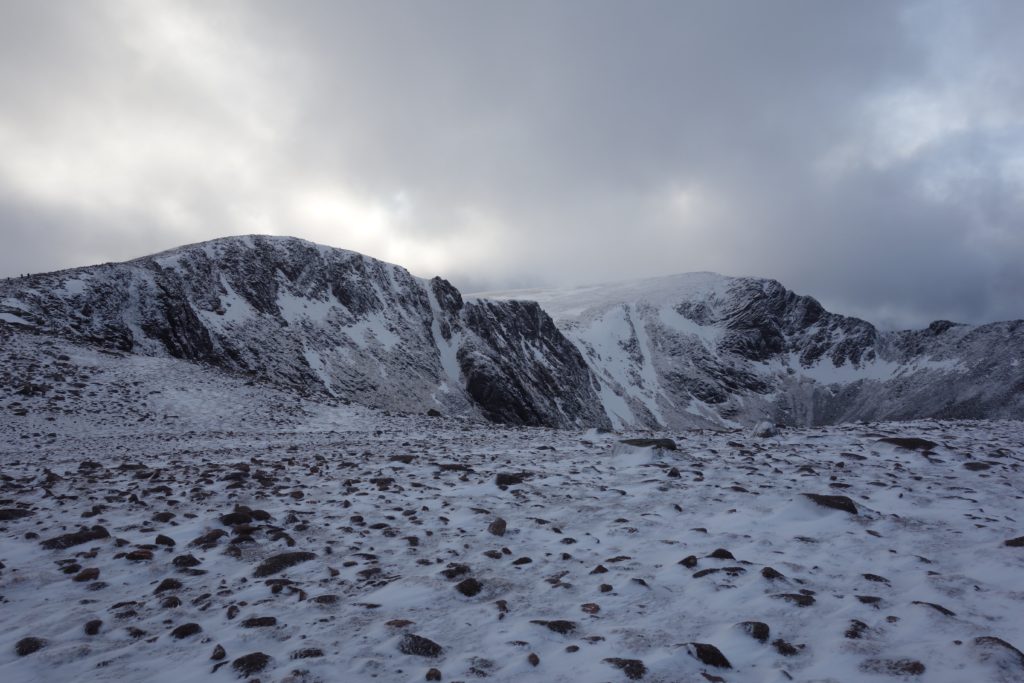In her latest dispatch from the Cairngorms, Anna Fleming is confronted by a disconcerting lack of snow

At 800m altitude, I heard a familiar snarl and looked for the white-grey ptarmigan. I couldn’t spot him. Strange. The bird should be obvious in amongst the heather and moss. Wait. There. A splash of orange paced the ground. This was no ptarmigan. The bird was well camouflaged in a rich, deep brown coat. A black grouse. I’ve never seen a grouse so high on this hill before. This is normally ptarmigan terrain.
For Scottish ptarmigan, skiiers and mountaineers, this winter has yet to show. January has gone and the lower slopes are still brown; the Cairngorm plateau has a thin white coating. Unless the hills get a significant dump of snow by mid February, then the 2019/20 Scottish winter season will be yet another non-event. The stark reality of this situation was driven home to me an on an avalanche awareness course.
I love winter in the mountains – the air is crisp, the light stunning. Yet with freezing temperatures, harsh winds, blizzards, white outs and avalanche risks, a day in the hills is not a given; it is a loan from the elements. One must go out armed with knowledge, respect and caution, ready to adapt your plans at a moment’s notice. For our course, we needed to find some snow.
The wind was fierce but the air was warm. Burns flowed. The ground was soft. Drizzle fell, slowly transforming into sleet and then white crystals as we climbed higher and the temperature dropped. We aimed for Coire an t-Sneachda, the Corrie of the Snow, which we concluded (after consulting maps and the avalanche forecast) was most likely to hold a snowpack.
Corrie an t-Sneachda is a Mecca for winter climbers. When the rocks and gullies fill with snow and ice, the corrie rings with the clink of metal gear and the calls of climbers. “On belay!” “Watch me!” “Safe!” Coloured specks dot the blue-white-grey slopes: climbers, working in pairs with ropes, ice screws, crampons and axes.
Not today.
There was no one on Mess of Pottage. No one on Aladdin’s Buttress. No one on Fiacaill Buttess.
The rocks were dark brown-grey: damp, not frozen. Bleached yellow-grey tufts of grass lined ledges and slopes. Isolated snow patches gleamed stark, forlorn white. When I picture the Cairngorms in January, these are not the conditions I dream of.

But we weren’t alone. Some thirty people were clustered into the corner where the Goat Track winds up onto the plateau. With its slightly easier angle and north-easterly aspect, this slope had collected some snow and the white ramp was thick with people putting winter gear to use. There were large groups on winter skills courses, a Mountain Rescue team out training, and scattered pairs of climbers.
Seeing so many human figures clustered together on a steep snow slope brought a different mountain to mind. Everest. Here was another version, on a smaller scale, of those astonishing queues on a mountainside. My skin prickled. There is danger in numbers.

We decided to skirt the crowd and head across to a quiet gully. Then a shout rang out.
“Rock!”
I looked up. Everyone on the white slopes stopped dead. Alert. Poised.
“ROCK!”
An immense red-brown block of granite careered down thesnow. Like a panicked bird that had been startled from its nest, the rock zig-zagged and bounced, taking flight and then landing heavy, tumbling and turning.
Many people stood below it.
In our vulnerability we became a collective. Eyes on the rock: eyes on one another.
The rock weaved down. People leapt out of the way. The rock charged on.
Finally, it came to rest among boulders below the snow.
The moment held – reverberations rippled across the slopes – then, gradually, activity resumed. We moved forwards, cautiously, and in this strange new world, another image appeared before me. My mind leapt from the mountaineers clustered on this meagre snow-patch to the far north and a vision of climate change.
A polar bear perched on an iceberg, clinging to a morsel of sea ice.
We were drawn, like the polar bear, into this one spot where the ice remained. Instructors, groups, individual mountaineers – we all sought the frozen world, and found it here, on asingle slope tucked into the vast Cairngorm plateau. I paused. Peering into the mist, for a moment, I glimpsed a world in retreat.
